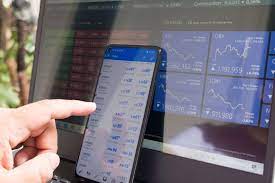Welcome to the world of Forex trading, where fortunes are made, and markets shift with the speed of thought. If you’re new to this intriguing world, you might feel overwhelmed by the seemingly impenetrable wall of terminology that surrounds it. Fear not, for we are here to demystify Forex jargon and provide you with a comprehensive beginner’s guide to navigating the exciting and potentially profitable realm of foreign exchange.
Understanding the Forex Market
What is Forex?
Forex, short for “foreign exchange,” is the global marketplace for buying and selling currencies. It’s the largest and most liquid financial market in the world, with a daily trading volume that surpasses $6 trillion. In simple terms, Forex trading involves the exchange of one currency for another with the aim of making a profit.
Currency Pairs
In Forex trading, you always deal with currency pairs. Each pair consists of two currencies, with one being the base currency, and the other being the quote currency. For example, in the EUR/USD pair, the Euro (EUR) is the base currency, and the US Dollar (USD) is the quote currency. Understanding currency pairs is fundamental to Forex trading.
Essential Forex Jargon
To navigate the Forex market effectively, you must familiarize yourself with the key terms and concepts used by traders and analysts. Here’s a breakdown of some essential Forex jargon:
Pips
A “pip” is the smallest price move that a given exchange rate can make based on market convention. It’s short for “percentage in point” or “price interest point,” and it’s crucial in measuring price movements.
Leverage
Leverage allows traders to control a large position with a relatively small amount of capital. While it can amplify profits, it also increases the risk of significant losses. It’s essential to use leverage wisely and be aware of the associated risks.
Margin
Margin is the amount of money required in your trading account to open and maintain a position. It serves as a security against potential losses. Understanding margin levels and how they work is critical to managing your trades effectively.
Lot Size
Lot size refers to the volume or quantity of a currency pair you trade. Different lot sizes represent varying levels of risk and potential profit. Standard, mini, and micro lots are common in Forex trading.
Stop-Loss and Take-Profit
Stop-loss and take-profit orders are essential risk management tools. A stop-loss order automatically closes your position to limit potential losses, while a take-profit order locks in your profits by closing a position at a predefined price.
Technical and Fundamental Analysis
To make informed trading decisions, you’ll need to understand the difference between technical and fundamental analysis. Technical analysis involves studying historical price charts and patterns, while fundamental analysis focuses on economic, political, and social factors that influence currency values.
The Forex Trading Process
Opening a Forex Account
Before you can start trading Forex, you’ll need to open an account with a reputable broker. Be sure to choose a broker with a user-friendly platform, competitive spreads, and a strong reputation for reliability and security.
Developing a Trading Strategy
A successful Forex trader relies on a well-thought-out trading strategy. This strategy should consider your risk tolerance, financial goals, and the time you can commit to trading. Remember that a well-defined strategy is key to long-term success.
Practice with a Demo Account
If you’re new to Forex trading, consider honing your skills with a demo account. It’s a risk-free way to get comfortable with trading platforms, test your strategies, and gain confidence without risking real money.
Risk Management
Managing risk is paramount in Forex trading. Set a clear risk management strategy, including stop-loss and take-profit levels, and never risk more than you can afford to lose.
Continuous Learning
The Forex market is constantly evolving, and staying informed is crucial. Follow market news, attend webinars, and read books written by experienced traders to expand your knowledge.
Final Thoughts
Demystifying Forex jargon is the first step in your exciting journey as a Forex trader. The key to success lies in education, practice, and discipline. With this beginner’s guide, you’re well on your way to understanding the intricacies of the Forex market and making informed trading decisions.


